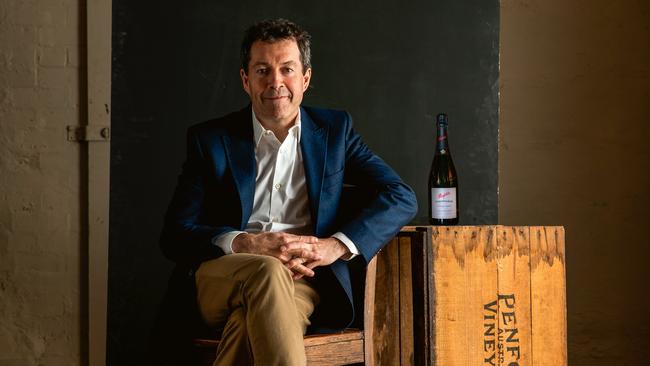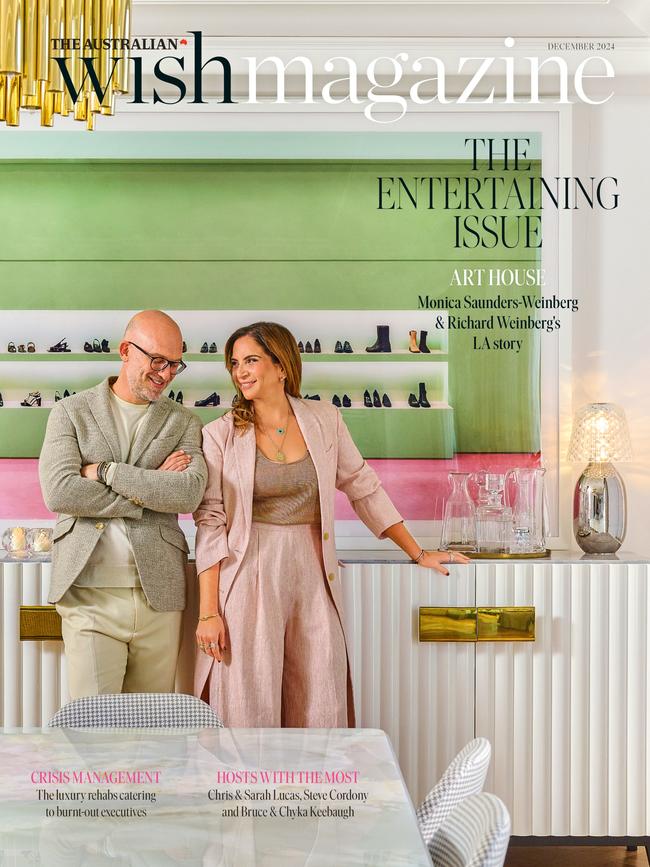Penfolds winemaking chief, Peter Gago, shares how he made their first Champagne
Penfolds winemaking chief Peter Gago on the Australian winemaker’s journey to making bubbles.

He is known around the world as the custodian of Australia’s most famous red wine, Penfolds Grange.
But spend an evening with Peter Gago and it’s obvious his private passion is Champagne.
“I just love everything about it,” the longstanding chief winemaker at Penfolds tells me after a dinner at the winery’s spiritual HQ, the historic Magill Estate, on Adelaide’s northern fringe. “It’s the wine, the culture, the district itself, the marketing – I think Champagne basically invented marketing – and I do really love old Champagne.’’
And Gago means old: he cites the 1943 Krug as among the most memorable Champagnes of his experience. He points out that ’43 also happened to be an excellent vintage for Salon.
While Krug and Salon are among the winemaker’s favourites, their approaches could not be more different.
Joseph Krug, who founded the house in 1843, was the king of blending. He insisted from early on that a great Champagne house should produce cuvées that were both non-vintage – and therefore blended with wines across different years – and a singular vintage to reflect the unique conditions of each season.
Nowadays, a Krug Grande Cuvée non-vintage builds from a base of about 50 per cent of wine from the most recent year before being blended with more than 120 wines from 10 different years.
Salon’s approach is the precise opposite. From its very first vintage in 1905, founder Eugène-Aimé Salon created a Champagne from one single terroir, the Côte des Blancs, using only one grape variety, chardonnay, and releasing only vintage wine each year.
For Gago, whose study of sparkling wines accelerated during his University of Adelaide-Roseworthy days in the 1980s, the differences speak to the tapestry that makes Champagne so magnetic – an attraction that Penfolds has fully embraced with its boundary-breaking collaboration with youthful Champagne house Thiénot, highly regarded for its innovative approach to quality production since established in 1985 by Alain Thiénot.
The partnership surprised the fine wine world when the first Champagne Thiénot x Penfolds wines – three 2012 vintage Champagnes – were released at the Ritz Paris in 2019. How could a traditional wine producer from Down Under and better known for blockbuster reds no less, wind up with its name on a vintage Champagne?
The answer lies in years of masterful planning.
As lovers of wine know, Champagne is hallowed ground. By virtue of its UNESCO World Heritage-listed status, the district is the most protected wine-producing region in the world and controlled by a formidable regulator, the Comité Interprofessionnel du Vin de Champagne (CIVC). Very little happens in Champagne without CIVC approval, whether that be how much wine is produced each vintage, how it is distributed and how Champagne is marketed to protect its trademarks and terroir. One thing is certain: outsiders don’t get to breeze into town and put their name on labels.
“It was important that everything we did from the beginning, we did sensitively and transparently with
the CIVC,’’ says Gago, who travelled regularly to Champagne to work closely on the project from its genesis with Stanislas Thiénot and Thiénot’s chef de cave Nicolas Uriel. “Unprecedented in Champagne, yet as we worked our way through the planning I think there was a recognition that perhaps Penfolds could share winemaking ideas and also help take Champagne to places that have been harder to access.”
It’s no secret that Penfolds and Gago have been careful and consistent nurturers of relationships in China – a market that has developed a keen taste for premium reds but shied away from Champagne, partly due to its sharper acid profile and need to be served cold. But that’s now changing: 2021 saw €66.7 million ($110 million) worth of Champagne exported to China, a stunning increase of 69.9 per cent since 2019.
“People [in China] are buying it [Thiénot x Penfolds wines], including a lot of millennial Chinese,” says Gago. “So in terms of a win for Champagne, you’re ticking both the China and millennial boxes.”

Champagne’s acceptance of Penfolds advanced further with the recent release of a new $79 Champagne Cuvée Brut still made in collaboration with Thiénot but with Penfolds’ stamp exclusively on the label.
The release cements the Penfolds brand in Champagne more than 100 years after its name first appeared on a bottle of sparkling, with the 1912 Penfolds Minchinbury “Champagne” made in Western Sydney.
As well as the Penfolds’ Cuvée Brut, the range now consists of Champagne Thiénot x Penfolds Avize Blanc de Blancs Grand Cru and Aÿ Blanc de Noirs Grand Cru vintage wines (both $280), as well as non-vintage Thiénot x Penfolds Rosé and Cuvée Brut (from $79).
“This French and Australian collaboration is a dream realised,’’ says Gago. “Loving Champagne doesn’t mean
I don’t admire and appreciate Australian sparkling but as most acknowledge, at the end of the day there is only one Champagne,” he says.
John Lehmann is the cellar director of The Australian Wine Club.
Three of Gago’s most memorable vintage drops
1943 Krug
“Bought, opened and shared in London. From the year of Krug’s 100th-anniversary, two years before the end of World War II. Although I’m enamoured with all Krug releases, specific vintages evoke happy memories. In recent years Krug Rosé has intrigued and delighted, and the inaugural 1979 Krug Clos du Mesnil BdB remains a contender.”
1988 Salon
“A whisker between this and the 1996 Salon. Defined, pure and with infinite palate length and disarming complexity. Increasingly rarefied. My regret? Not acquiring magnums – a mandatory when cellaring these Mesnil treasures. Truly a desert-island wine. Be careful with whom you share!”
2013 Thiénot x Penfolds Blanc de Noirs
“A Champagne of contradiction as 2013 was not a hugely acclaimed vintage. And a one-hectare single-vineyard expression [Chambre Aux Loups vineyard in Aÿ] is a little left-field of Champagne’s ethos of blending. It was named best Blanc de Noirs Champagne in the world last year by FINE The Wine Magazine’s tastingbook.com. No bias here!”
This story is from the December issue of WISH.





To join the conversation, please log in. Don't have an account? Register
Join the conversation, you are commenting as Logout